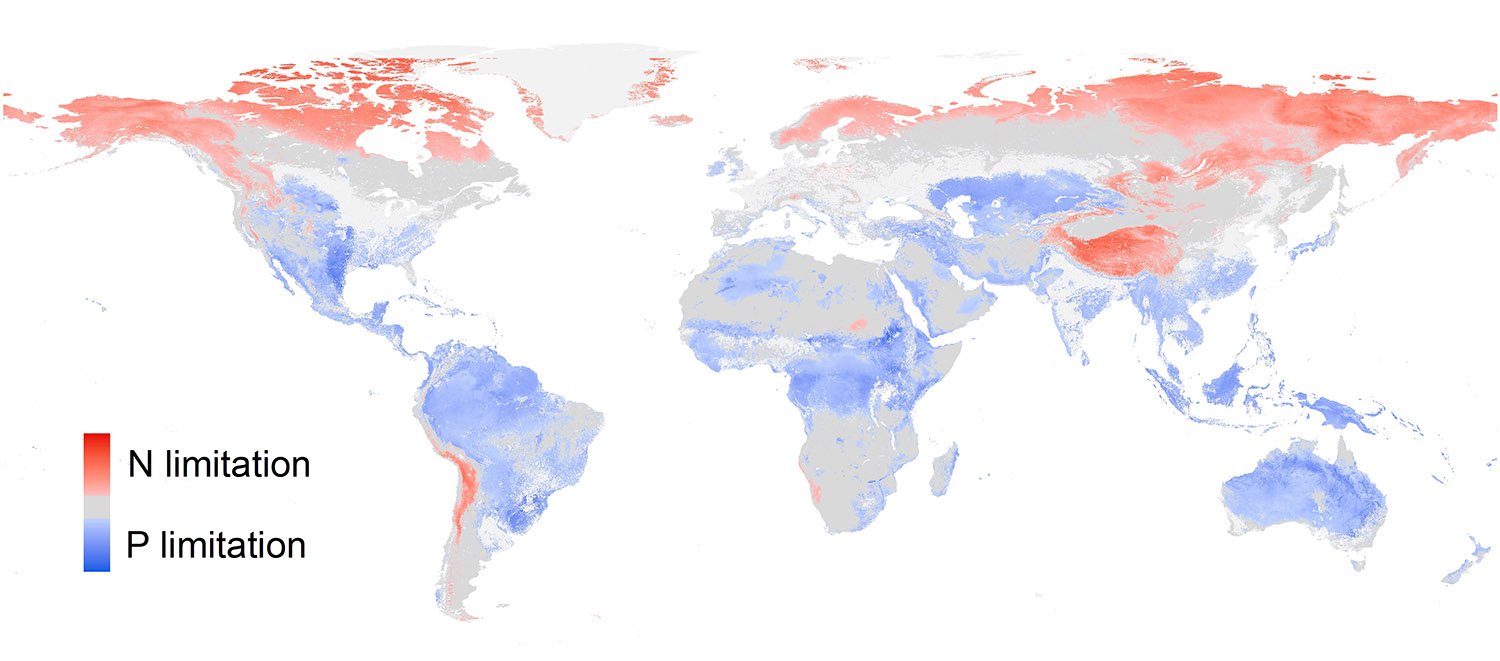The concept of nutrient limitation originated from middle 1840s, when the famous Germany chemist Justus Freiherr von Liebig first proposed the Liebig’s Law of the Minimum based on experiments that added essential nutrients to improve crop productivity. The idea was later introduced to natural plant communities, evoking numerous efforts to evaluate the extent and strength of nutrient limitation (mainly nitrogen and phosphorus) in terrestrial ecosystems via fertilization experiments or indirect indicators. These efforts have greatly improved our understanding of nutrient limitation, but global heterogeneity of terrestrial nitrogen and phosphorus limitation still remain an enigma in the field of terrestrial ecology and biogeochemistry. Meanwhile, more and more studies have emphasized the role of nitrogen and phosphorus to limit future land C sinks in response to ongoing climate change and rising carbon dioxide, increasingly leading to a call for global maps of nutrient limitation.

“Farmers and foresters spend huge amounts of money and time analyzing the nutrient needs of crops and trees,” said study senior author Rob Jackson, a professor of Earth system science in Stanford’s School of Earth, Energy & Environmental Sciences (Stanford Earth). “We need to do the same for natural forests and grasslands.”
[ad_336]
Using theoretical considerations as their foundation, the new study defined an indicator using plant leaf nutrient resorption efficiencies to estimate N and P limitation at the ecosystem scale. Global patterns of terrestrial nitrogen and phosphorus limitation were mapped using variables ranging from temperature and precipitation to soil fertility and vegetation characteristics. The predictions agree well with results of nitrogen- and phosphorus-limitation experiments based on nutrient additions. Overall, 18% of Earth’s land area, excluding cropland, urban, and glacial areas, is strongly limited by nitrogen alone, whereas 43 % is strongly phosphorus limited.
The remaining 39% of natural terrestrial land area could be co-limited by nitrogen and phosphorus or weakly limited by either nutrient alone. Nitrogen limitation is more common in boreal forests, tundra, temperate coniferous forests and montane grasslands and shrublands, according the findings, whereas phosphorous limitation is more common in tropical and subtropical forests, temperate broadleaf and mixed forests, deserts, Mediterranean biomes and grasslands, savannas and shrublands in tropical, subtropical and temperate regions.
“Our work provides a theoretical framework for testing nutrient limitation and an empirical benchmark of nitrogen and phosphorus limitation for models to constrain predictions of the terrestrial carbon sink. It will help to improve representation of nutrient limitation in Earth system models and identify hotspots of future land carbon sinks in response to climate change and rising carbon dioxide concentrations.” said Enzai Du, an associate professor at Beijing Normal University and lead author of the study published today in Nature Geoscience. “Although we studied nutrient limitation in relatively natural ecosystems, there is a potential to extend our approach to human-dominated or managed ecosystems, such as commercial plantations and urban forests. This could lead to better nutrient management in these ecosystems.”